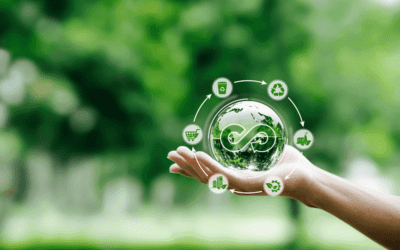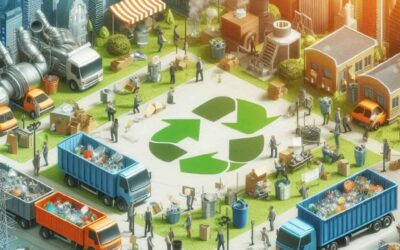ISB Global’s Future of Waste Series: Part 3 – Is this the future of waste?
If you’ve already read parts one and two of this series, you’ll know that many towns and cities around the world have adopted a Pay As You Throw (PAYT) approach to waste management over the past couple of decades.
Some cities have had a successful scheme in place for years. Others have had to adjust their initial programmes to account for behaviours or perceptions of the scheme, whilst many have introduced PAYT schemes very recently.
In the UK, a PAYT scheme was proposed in the 2000s, but never taken forward, and while cities in some countries are adopting PAYT with enthusiasm, many countries don’t have any schemes in operation and are still looking for ways in which local authorities, businesses and individuals can work together to reduce waste.
So what is the future of PAYT?
The value in your waste
All the predictions and considerations in this article are based on the conversations we’ve had with authorities, waste and recycling experts and waste collection companies. Our views are also based on the latest market intelligence and research, and we are leaders in our field, so often people engage with us to get our views on how we think issues like PAYT will play out.
For us, there are two sides to the PAYT coin:
- Consumers – the individual households and businesses that generate waste.
- Commercial – the businesses that collect, sort, recycle, reuse or resell that waste.
For consumers, PAYT is a step on the waste management journey. This journey starts with a society that throws everything away, sending it all to landfill or incineration, and producing a huge contribution to increasing greenhouse gas emissions. Some believe we/consumers have been living in a false economy for too long.
The next step is splitting waste and recycling, separating out certain types of waste that can be collected separately and treated or managed so it can be reused or turned into something new.
Adding food waste recycling to this mix allows food waste to be treated separately. It prevents it going to landfill or incineration and instead allows it to be used to produce compost or biofuel. Alongside wide-ranging recycling, this allows people to send less waste to landfill or incineration.
PAYT is designed to help us/consumers to consider what they buy, what they use and what they throw away. The incentive for this is how much they pay: the more you throw away, the more you pay.
In successful PAYT schemes, this has proved to be an effective tool. Once individuals have to pay directly for the waste they produce, they quickly reduce how much they throw away. For example, in Massachusetts, towns with PAYT schemes generated 1,239 pounds of waste per household in 2020, compared with 1,756 pounds per household in towns with a standard approach to waste management. This is a 30% reduction.

Source: http://payasyouthrow.org/
What are the commercial drivers?
We need to move to a circular economy. This is where materials are put back onto the market and reused, rather than using the planet’s finite natural resources. We need to do this precisely because these materials are finite – at some point, we will run out.
So, how do we make waste commercially viable? We’re already starting to see waste and recycling companies generate new income streams from reselling some of the materials they collect. This is only going to increase. It’s a valuable – and profitable – commercial opportunity, and it contributes both to a better use of the waste we produce, and a reduction in new materials mined.
According to an article in Resource Recycling, “The primary benefit to MRFs* is that as the volume of recyclables sent to them increases, so does the amount that they can trade on the commodities market. That added volume also gives the processing industry increased pricing power in that market, and it provides them with significant amortization benefits. Increasing the materials throughput in these facilities also allows MRFs to utilize the facilities at closer to their full capacity, speeding up the time it takes for them to recoup the multimillion-dollar investment they must make to build each new facility.”
*Materials Recovery Facilities
Improving waste collection and adding new income streams brings economic advantages including job creation and potentially greater corporate tax revenues. It requires investment, of course, so that waste and recycling management operations are properly equipped to deal with collecting tagged bins or bags, managing accurate weighing and segregating, and running resale operations.
To run a successful waste and recycling business in a circular economy climate, you need the right data and the right management systems in place. The best way to do this is to invest in an integrated system designed and built by people who properly understand the industry. Implementing this type of comprehensive, joined-up approach standardises, simplifies and automates every waste and recycling process. This in turn delivers better visibility, more effective reporting and more efficient operational and financial efficiency across the organisation.
We’re also sharing our expert predictions for this area, looking at how – in the near future – the contents of your bin may be valuable enough to warrant operators paying you for them.
To find out more, contact our team today or visit our showcase below.






